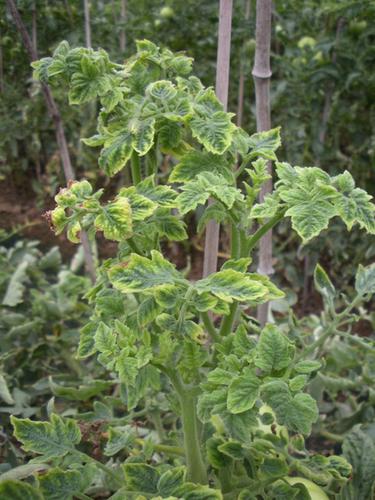当前位置:
X-MOL 学术
›
Funct. Ecol.
›
论文详情
Our official English website, www.x-mol.net, welcomes your
feedback! (Note: you will need to create a separate account there.)
A non‐vector herbivore indirectly increases the transmission of a vector‐borne virus by reducing plant chemical defences
Functional Ecology ( IF 4.6 ) Pub Date : 2020-02-13 , DOI: 10.1111/1365-2435.13535 Qi Su 1 , Fengbo Yang 1 , Qixi Yao 1 , Zhengke Peng 2 , Hong Tong 1 , Shaoli Wang 2 , Wen Xie 2 , Qingjun Wu 2 , Youjun Zhang 2
中文翻译:

非载体草食动物可通过减少植物的化学防御来间接增加载体传播的病毒的传播
更新日期:2020-02-13
Functional Ecology ( IF 4.6 ) Pub Date : 2020-02-13 , DOI: 10.1111/1365-2435.13535 Qi Su 1 , Fengbo Yang 1 , Qixi Yao 1 , Zhengke Peng 2 , Hong Tong 1 , Shaoli Wang 2 , Wen Xie 2 , Qingjun Wu 2 , Youjun Zhang 2
Affiliation

|
- Vectors and viruses exist in communities consisting of many interacting species. Although the cascading effects of predators or parasitoids on disease spread via direct effects on vectors have been investigated, little is known about the effects of other free‐living species in communities on the transmission of vector‐borne viruses via indirect (host‐plant mediated) effects on vectors.
- In the present study, we used a food web consisting of tomato plants Solanum lycopersicum, two tomato herbivores (the vector whitefly, Bemisia tabaci, and the non‐vector two‐spotted spider mite, Tetranychus urticae) and a whitefly‐vectored plant virus (Tomato yellow leaf curl virus, TYLCV) to study how T. urticae may affect TYLCV transmission by B. tabaci via host‐plant mediated effects on B. tabaci.
- We found that T. urticae infestation promoted B. tabaci feeding, thereby increasing TYLCV transmission to tomato plants. These increases were associated with T. urticae‐induced reductions in two flavonoids (rutin and quercetin trisaccharide) of tomato plants. Elevation of rutin and quercetin trisaccharide levels in T. urticae‐infested plants via exogenous stem applications reduced B. tabaci feeding and TYLCV transmission. Therefore, suppression of these flavonoids by T. urticae infestation was the most likely explanation for the observed changes in B. tabaci feeding behaviour and TYLCV transmission.
- Our results show that by reducing flavonoids in tomato plants, a non‐vector herbivore can indirectly increase the transmission of a vector‐borne plant virus. These findings indicate that species that are far removed from the direct vector–virus interactions can indirectly affect vector‐borne virus transmission by altering the chemical defences of the shared host plant.
中文翻译:

非载体草食动物可通过减少植物的化学防御来间接增加载体传播的病毒的传播
- 媒介和病毒存在于由许多相互作用物种组成的社区中。尽管已经研究了天敌或寄生虫通过对载体的直接影响对疾病传播的级联效应,但对于社区中其他自由活动物种对媒介传播的病毒通过间接(宿主植物介导)传播的影响知之甚少对向量的影响。
- 在本研究中,我们使用的食物网包括番茄植物茄子,两个番茄食草动物(矢量粉虱,烟粉虱和非矢量两点叶螨Tetranychus urticae)和粉虱载体的植物病毒(番茄黄叶卷曲病毒(TYLCV),研究荨麻杆菌如何通过寄主植物介导的对烟粉虱的影响来影响烟粉虱的TYLCV传播。
- 我们发现,荨麻疹的侵染促进了烟粉虱的进食,从而增加了TYLCV向番茄植物的传播。这些增加与荨麻疹引起的番茄植物中两种类黄酮(芦丁和槲皮素三糖)减少有关。在槲皮素和芦丁三糖水平升高T.螨-infested植物外源经由干应用减少烟粉虱馈送和TYLCV传输。因此,荨麻疹侵袭对这些类黄酮的抑制是最可能解释烟粉虱进食行为和TYLCV传播变化的原因。
- 我们的结果表明,通过减少番茄植物中的类黄酮,非载体草食动物可以间接增加载体传播的植物病毒的传播。这些发现表明,远离直接的载体-病毒相互作用的物种可以通过改变共有宿主植物的化学防御作用而间接影响载体传播的病毒传播。









































 京公网安备 11010802027423号
京公网安备 11010802027423号